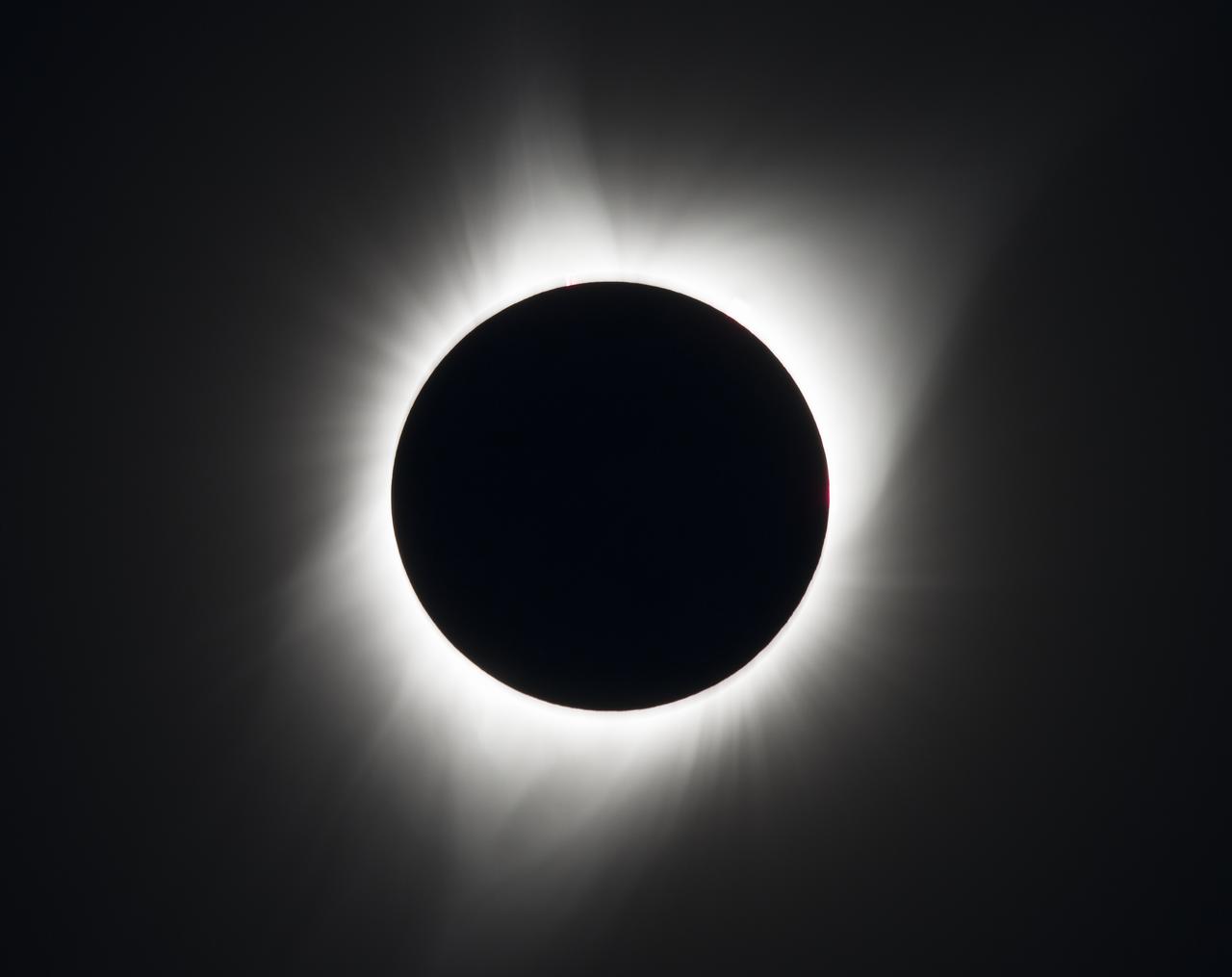Formula for an eclipse: Right place, right time for Earth, sun and moon
How does an eclipse work?
April 8, 2022
By Rebekah Hall
U of A System Division of Agriculture
Fast Facts:
- Arkansas to experience total eclipse on April 8, 2024
- Eclipse happens when moon is between Earth and sun.
(206 words)
(Newsrooms — With sidebars: 04-08-2022-Ark-Eclipse-2024-Prep; 04-08-2022-Ark-Eclipse-Education; With NASA file art of total eclipse: https://images.nasa.gov/details-NHQ201708210100, https://images.nasa.gov/details-AFRC2017-0233-006 )
LITTLE ROCK — For a solar eclipse to occur, the moon must be in the right place at the right time — between the sun and the Earth.
It’s an event that happens in the daytime, during a new moon. Normally, the moon’s orbit is tilted a few degrees relative to the plane of the Earth’s orbit, making its position either too high or too low to block out the sun – thus an eclipse does not occur each month.

However, during certain predictable times, the moon will “cross the Earth’s orbit right in front of the sun, casting its shadow on the earth,” said Darcy Howard, eclipse resource developer with the Central Arkansas Astronomical Society.
“Eclipses occur at these orbital locations called nodes, which are crossing points in the earth’s orbit around the sun,” Howard said.
Carl Freyaldenhoven, CAAS eclipse resource coordinator, said that after the 2024 eclipse, the next total eclipse crossing Arkansas will take place on August 12, 2045.
For more resources and information about the 2024 Great North American total solar eclipse and its path across Arkansas, visit ar-eclipse.info. As April 8, 2024 draws closer, check the Arkansas 4-H Science page for educational resources and the C.A. Vines Arkansas 4-H Center website for booking information.
To learn about extension programs in Arkansas, contact your local Cooperative Extension Service agent or visit www.uaex.uada.edu. Follow us on Twitter and Instagram at @AR_Extension. To learn more about Division of Agriculture research, visit the Arkansas Agricultural Experiment Station website: https://aaes.uark.edu. Follow on Twitter at @ArkAgResearch. To learn more about the Division of Agriculture, visit https://uada.edu/. Follow us on Twitter at @AgInArk.
About the Division of Agriculture
The University of Arkansas System Division of Agriculture’s mission is to strengthen agriculture, communities, and families by connecting trusted research to the adoption of best practices. Through the Agricultural Experiment Station and the Cooperative Extension Service, the Division of Agriculture conducts research and extension work within the nation’s historic land grant education system.
The Division of Agriculture is one of 20 entities within the University of Arkansas System. It has offices in all 75 counties in Arkansas and faculty on five system campuses.
Pursuant to 7 CFR § 15.3, the University of Arkansas System Division of Agriculture offers all its Extension and Research programs and services (including employment) without regard to race, color, sex, national origin, religion, age, disability, marital or veteran status, genetic information, sexual preference, pregnancy or any other legally protected status, and is an equal opportunity institution.
# # #
Media contacte: Rebekah Hall, rkhall@uada.edu, 501-671-2120